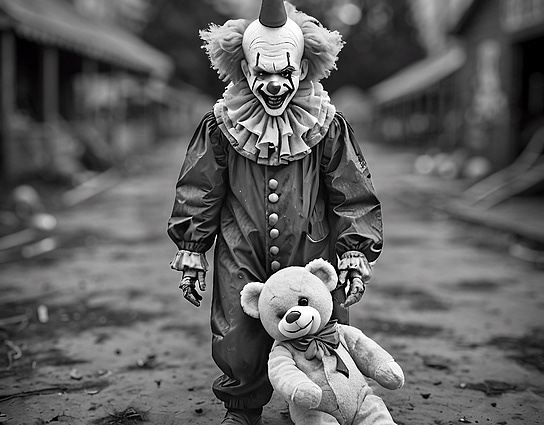A haunting and surreal scene unfolds beneath the inky blackness of the water. A once loved, worn teddy bear, its fur matted and lifeless, floats suspended in the depths. Its vacant, glassy eyes stare blankly upwards, reflecting the dim light filtering from above. A lone, skeletal hand, seemingly detached from anybody, reaches out from the darkness, its fingers outstretched towards the bear.
The bear's expression is a chilling blend of innocence and resignation, its slightly upturned mouth frozen in a permanent smile. Its fur, once soft and cuddly, now resembles seaweed, swaying gently with the invisible currents. The overall tone of the image is one of melancholy and despair, a stark contrast to the cheerful and comforting image of a teddy bear.
The composition of the image is both simple and striking. The dark background emphasizes the bear's isolation, while the stark contrast between the light and dark areas creates a sense of drama and mystery. The skeletal hand adds an element of horror and the unknown, hinting at a larger story that lies beneath the surface.
The title, "Teddy Bear Apocalypse: The Big Deep," suggests a world where childhood innocence has been consumed by darkness. The bear, a symbol of comfort and security, is now a victim of this apocalyptic event. The "Big Deep" could refer to both the literal depth of the water and the metaphorical depths of despair and loss.
Bob Orsillo's masterful use of light and shadow creates a sense of depth and atmosphere. The interplay of light and dark highlights the bear's vulnerability and isolation, while also suggesting a hidden menace lurking in the shadows.
The image is both disturbing and beautiful, a testament to Orsillo's skill as an artist. It raises questions about the nature of childhood, loss, and the fragility of life. It is a haunting reminder that even the most cherished objects can be consumed by darkness.










